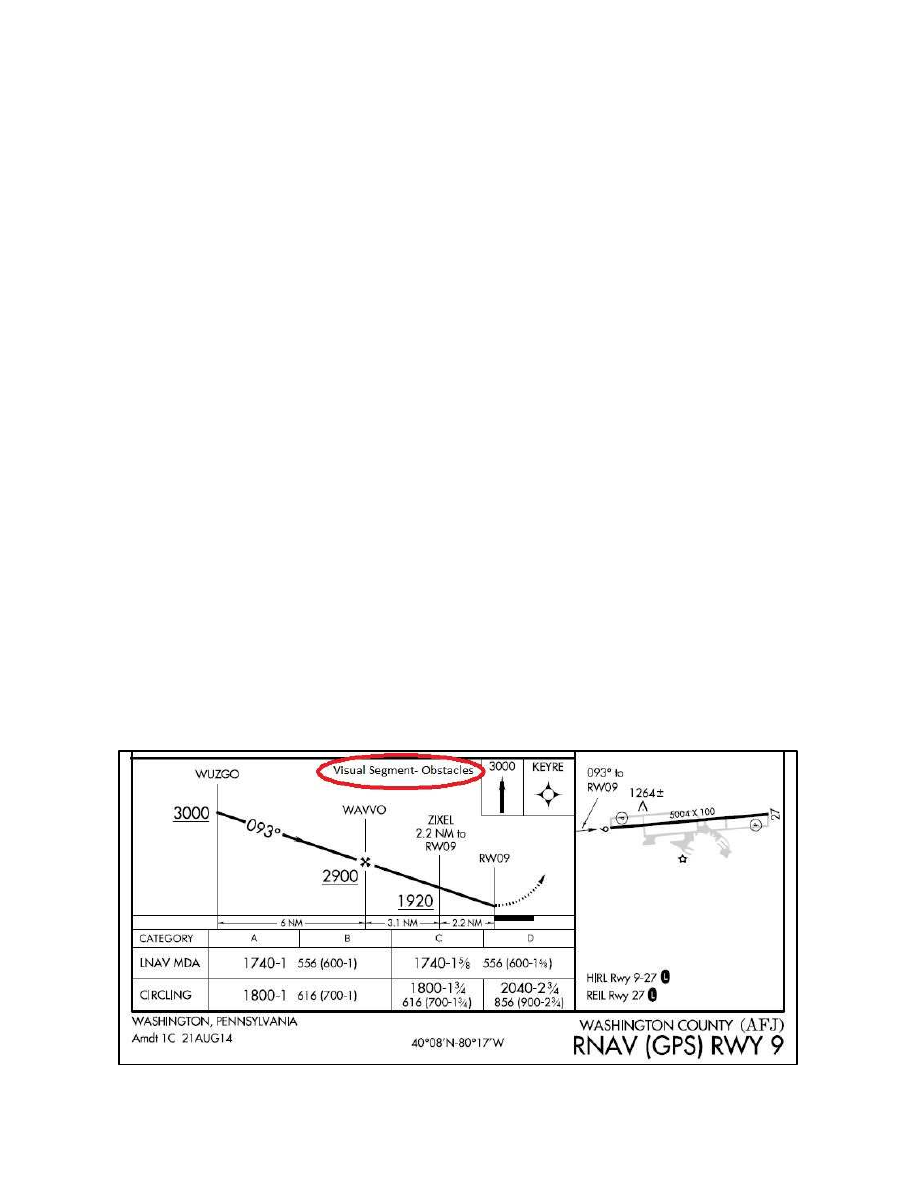
AIM
8/15/19
5
−
4
−
20
Arrival Procedures
VDA does not guarantee obstacle protection below
the MDA in the visual segment. The presence of a
VDA does not change any nonprecision approach
requirements.
1.
Obstacles may penetrate the obstacle identifi-
cation surface below the MDA in the visual segment
of an IAP that has a published VDA/TCH. When the
VDA/TCH is not authorized due to an obstacle
penetration that would require a pilot to deviate from
the VDA between MDA and touchdown, the
VDA/TCH will be replaced with the note “Visual
Segment- Obstacles” in the profile view of the IAP
(See FIG 5
−
4
−
14). Accordingly, pilots are advised to
carefully review approach procedures to identify
where the optimum stabilized descent to landing can
be initiated. Pilots that follow the previously
published descent angle, provided by the RNAV
system, below the MDA on procedures with this note
may encounter obstacles in the visual segment. Pilots
must visually avoid any obstacles below the MDA.
(a)
VDA/TCH data is furnished by FAA on
the official source document for publication on IAP
charts and for coding in the navigation database
unless, as noted previously, replaced by the note
“Visual Segment – Obstacles.”
(b)
Commercial chart providers and naviga-
tion systems may publish or calculate a VDA/TCH
even when the FAA does not provide such data. Pilots
are cautioned that they are responsible for obstacle
avoidance in the visual segment regardless of the
presence or absence of a VDA/TCH and associated
navigation system advisory vertical guidance.
2.
The threshold crossing height (TCH) used to
compute the descent angle is published with the
VDA. The VDA and TCH information are charted on
the profile view of the IAP following the fix
(FAF/stepdown) used to compute the VDA. If no
PA/APV IAP is established to the same runway, the
VDA will be equal to or higher than the glide path
angle of the VGSI installed on the same runway
provided it is within instrument procedure criteria. A
chart note will indicate if the VGSI is not coincident
with the VDA. Pilots must be aware that the
published VDA is for advisory information only and
not to be considered instrument procedure derived
vertical guidance. The VDA solely offers an aid to
help pilots establish a continuous, stabilized descent
during final approach.
3.
Pilots may use the published angle and
estimated/actual groundspeed to find a target rate of
descent from the rate of descent table published in the
back of the U.S. Terminal Procedures Publication.
This rate of descent can be flown with the Vertical
Velocity Indicator (VVI) in order to use the VDA as
an aid to flying a stabilized descent. No special
equipment is required.
FIG 5
−
4
−
14
Example of a Chart Note